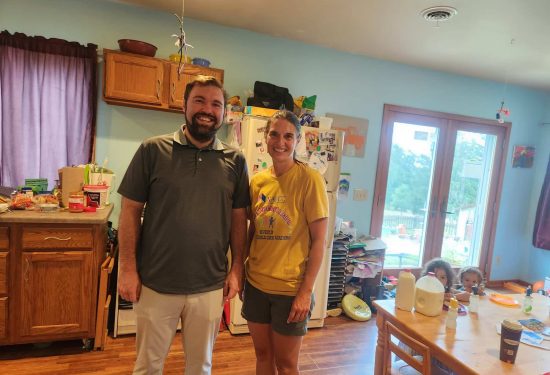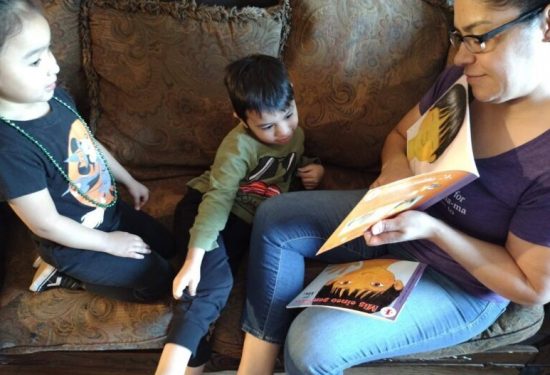(This article was previously featured on Early Learning Nation.)
Home-based child care, including licensed Family Child Care (FCC), is an ideal solution for many families, including those who work evenings and nontraditional hours, live in rural communities or come from immigrant backgrounds. This type of care is often preferred for its culture and linguistic relevance and for families’ continuity of care, allowing families to keep together siblings of different age groups.
Given the benefits of FCC for families, why do so few FCC programs provide publicly-funded pre-K? In more than half of all states, FCC providers are not included in the public pre-K system and do not have the option to participate.
A recently released report from Home Grown and the National Institute for Early Education Research (NIEER) provides critical state and city data on the current integration of Family Child Care (FCC) providers in publicly-funded pre-K. Titled Including Family Child Care in State and City-Funded Pre-K Systems: Opportunities and Challenges, it also examines perceived opportunities and challenges with FCC participation in pre-K.
Home Grown believes that Family Child Care providers contribute a vital service, often in under-served communities, and are deserving of the opportunity to access public pre-K funding to further nurture and teach the children in their care.
The report explores some of the factors that may influence administrators’ decisions about whether to include FCCs in their publicly-funded pre-K systems, including issues of access, quality and cost. For example, publicly-funded pre-K often has higher program standards and requires pre-K teachers to have more advanced credentials, requirements that much of the FCC workforce may not currently meet. Yet these challenges also present opportunities, such as the opportunity to create a more robust support system for FCC providers and the opportunity to define and measure quality specific to FCC settings.
The report also shows that while 24 states allow FCC providers to receive state pre-K dollars, seven of those states report no FCC participation and only 10 states were able to report enrollment information. The data convey that in most locations, fewer than 1% of children receive pre-K in FCC programs. The large majority of children attend pre-K in center-based or school-based settings. But in limiting pre-K to centers and schools, states may not be meeting families’ needs.
Home Grown consulted with some of its provider advisors regarding their experiences as pre-K providers. Adrienne Briggs, owner of Lil Bits Family Child Care Home in Philadelphia, PA and a pre-K provider, shares that while there are increased requirements, there is training available to providers. “Training is offered for the assessment tools needed to offer pre-K. That helps so that providers can get more comfortable.”
One obstacle that surfaced for Briggs was the scheduled times for the trainings. “Being home-based, there is only one of you with the children, so it can be difficult to leave for two hours during the day for training.” Briggs states that it does get easier; she found that training requirements decreased after the first year of eligibility. She encourages providers to advocate for convenient training days and times.
Another challenge for FCC providers is the sometimes convoluted process to access state and local funding for pre-K programs. Requirements for pre-K programs vary widely by state and the requirements can create barriers for providers, many of whom are sole proprietors, and who lack the time and resources to navigate these systems on their own.
But Christina Nelson, owner of Mountain View Child Care in North Troy, VT, urges FCC providers to persist. A FCC provider with 26 years of experience, Nelson is beginning to offer publicly-funded pre-K. She encourages all FCC providers to seek pre-K funding eligibility. “Funding for pre-K will definitely help stabilize your business.” she says. “While there are a lot of requirements, once approved, providers have the flexibility to make their program their own.” Nelson shares that this flexibility is what makes home-based pre-K programming unique.
“Our instruction can be flexible. You can teach children outside, inside. As a home-based provider, you have much more flexibility in your day. We are not limited to a strict schedule. We can provide instruction based on the children’s needs that day.”
Though requirements for home-based providers can feel stringent, Nelson explains that some of the requirements can be easier to overcome than most think. “I want providers to know that they are already doing the work. They most likely already use similar assessment tools for their children. It’s just a matter of formalizing what they use to have access to those additional funds.”
Now is an opportune time to revisit the inclusion of FCC in publicly-funded pre-K. Funding through the Coronavirus Aid, Relief and Economic Security (CARES) Act, the Coronavirus Response and Relief Supplemental Appropriations (CRRSA) Act, the Governors Emergency Education Relief (GEER) Fund, the American Rescue Plan Act (ARPA), as well as Biden’s American Families Plan all provide opportunities for FCC providers to gain access to pre-K funding at much higher rates than before.
Ensuring that pre-K is available in all locations, for all families is an issue of equity.
Home Grown encourages administrators of all publicly-funded pre-K systems to explore the report and learn more about the opportunities for including Family Child Care providers. While there are challenges, Home Grown believes that FCC providers contribute a vital service, often in under-served communities, and are deserving of the opportunity to access public pre-K funding to further nurture and teach the children in their care. As Briggs says, “Give home-based providers the opportunity to service children from birth to age five with the right amount of funding.”




